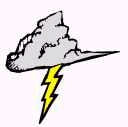Down
| 1. | Earth is closest to the sun on the third day of ____. |
| 3. | When the Northern Hemisphere of Earth has spring, the Southern Hemisphere of Earth has this season. |
| 4. | The earth makes one ___ around the sun once every year (approximately 365.25 days). |
| 5. | In the northern hemisphere, summer solstice occurs on ____ 21. |
| 7. | The season in the Southern Hemisphere when the North Pole is tilted toward the Sun. |
| 9. | The earth ___ on its axis once every 24 hours. |
| 12. | The earth's axis is not perpendicular to the plane of the earth's orbit around the sun. The axis is titled by about 23.5 ____. |
| 13. | At any one time, half of Earth has sunlight. |
| 16. | In the northern hemisphere, autumnal (or fall) equinox occurs on ____ 22. |
| 18. | On Earth, the hottest time of year is approximately one ____ after the first day of summer. |
| 23. | In space, Earth's axis is always pointed in the same direction. Earth's axis changes position relative to the ____, because of its revolution. |
|
|
Across
| 2. | An imaginary line that divides Earth between its two hemispheres. |
| 5. | Earth is farthest from the sun on the third day of ____. |
| 6. | The tilt of the earth changes the way ____ hits the earth. |
| 8. | Night and day occur on Earth because of the Earth's ____. |
| 10. | In the northern hemisphere, vernal (or spring) equinox occurs on ____ 20. |
| 11. | When Earth revolves around the sun, its axis is ___. |
| 14. | In the winter, the Sun's rays strike Earth at a greater ____ than during the winter. |
| 15. | The Earth rotates around its ____. |
| 17. | In the northern hemisphere, winter solstice occurs on ____ 21. |
| 19. | About 20% of the solar energy that reaches Earth is absorbed among the various layers of the ____. |
| 20. | When sunlight strikes the earth at a ____, it covers more area because the light is spread out. |
| 21. | The season in the Northern Hemisphere when the North Pole is tilted toward the Sun. |
| 22. | If Earth were upright in relation to the Sun, there would be no ____ on Earth. |
|









































































































































































































































































































































































































































































































































































































































































